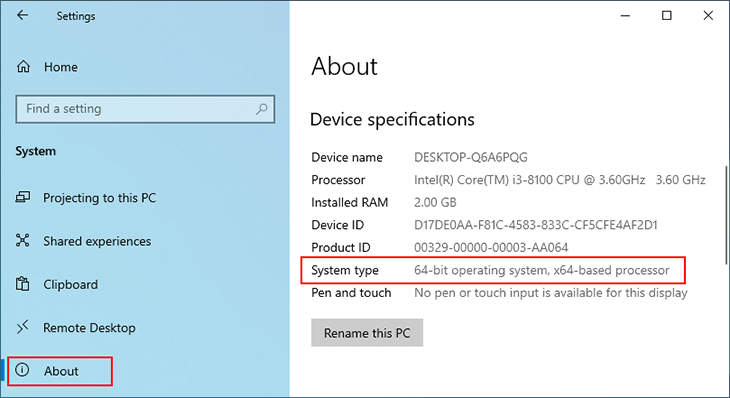

Operating systems are often referred to as being 32-bit or 64-bit. We recommend that you purchase Windows 7 in 64-bit architecture.How to Check if Windows 10 is 32 or 64-bit

By purchasing a 64-bit edition of Windows 7, you risk not being able to use very old hardware (printers, scanners, etc.) Overall, the likelihood of having hardware old enough to be incompatible with 64-bit Windows 7 is pretty slim. The easy way to "future proof" your computer purchase is to give it plenty of horse power purchasing a 32-bit version of Windows ("edition", as it is actually called), will limit you to under 4Gb of RAM, which is fine for now, but may be considered too little for some applications in a few years. Should you buy Windows 7 in 32-bit or 64-bit? And this is your answer and gives you your processor architecture - you can now close the Control Panel (Windows 7 / Vista) or the System dialog in Windows XP. Under " System type", Windows 7 and Windows Vista will display one of the following descriptions: it will either read " 32-bit Operating System" or " 64-bit Operating System".The screenshot below shows this information for Windows 7: In the case of Windows XP, a dialog will open for Vista and 7, the Control Panel will open either way, the information you will see on screen is the one you are looking for.Use the following keyboard shortcut to launch this screen: press the Windows logo key, and while holding it down, press the Pause/Break key on your keyboard. This information is displayed inside your system information screen (which, for Windows 7 and Vista, is inside the Control Panel).Here are simple steps to check if you are running 32-bit or 64-bit this technique works for Windows XP, Windows Vista, and Windows 7: Find out if you have a 32-bit or 64-bit version of Windows


 0 kommentar(er)
0 kommentar(er)
